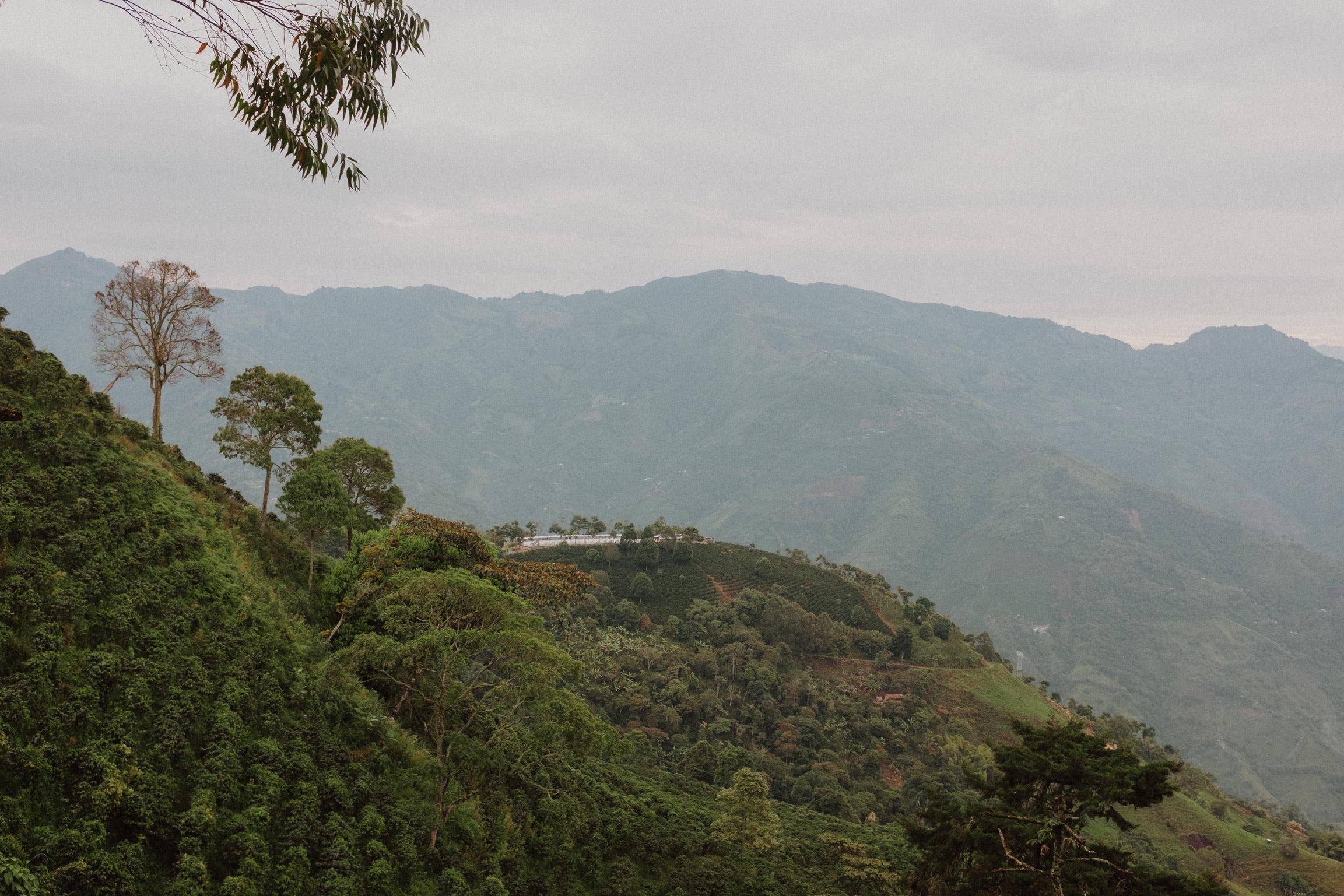
Describing coffee
Coffee is like wine. There’s the gas-station kind that taste like sludge, the critically-acclaimed kind that experts and hipsters alike hail as tasting like bouquets of flowers — and everything in between.
Similar to wine, coffee is made from fermented fruit (technically fermented seeds, in the case of coffee) that produce different flavors and aromas depending on the plant variety, how and where it is grown, and other factors. Professional tasters have their rubrics and definitions for what makes a delicious drink — and we’ll share some of their insights — but the only thing that really matters is finding a coffee you love. Here is some coffee vocabulary to help you identify what you’re tasting, so you can order coffee you like.
-
1. Intensity vs. strength
You know that groggy morning feeling — when your alarm goes off after a late night at a weeknight concert, or binging on a netflix series? Your first thought might be: I need a seriously strong coffee.
When people crave “strong” coffee, they often ask for a dark roast, which is commonly believed to be more caffeinated, and more intense in taste. This is, in fact, a myth. By volume, lighter roasts, not darker ones, are actually slightly higher in caffeine — beans lose density and aromatic complexity the longer they are roasted. Specialty coffees, like the ones we roast at Pergamino, are rarely bitter, due to their freshness and light roasting — but they are more intense in aroma, and also can be quite caffeinated.
-
2. Flavor & aroma
Given the incredible diversity of food we enjoy, from citrus fruits to savory steaks, it may seem like there are a million different possible flavors to taste. In reality, there are only 5 universal flavors: bitter, sour, sweet, salty, and umami (a brothy, meaty flavor). Everything else is fragrance and aroma — which is why things taste bland when you have a cold and can’t smell anything.
When you sip a cup of great coffee, aromatic compounds reach your nose, adding a burst of complexity to the relatively straight-forward flavors perceived by your taste buds: sweetness, light acidity, and subtle bitterness. When experts describe a coffee as having “notes of strawberry,” we’re referring to the aroma — not the fact that strawberries were added, or grown near the coffee plant. The strawberry sensation comes from a mix of aromatic compounds in the coffee similar to what you’d find in the actual fruit.
-
3. Sweetness
Bitterness is a small part of specialty coffee, but it shouldn’t be its overarching taste. In fact, specialty coffees always seem a bit sweet — even though the drink itself has zero calories. The perception of sweetness comes from aromatic compounds that bring to mind chocolate, caramel, or fruit, etc.
When a coffee is of poor quality, or is roasted at scorching temperatures to speed up the process and ensure homogeneity, a bitter (almost burnt) taste dulls any natural sweet notes. This is why many people got used to thinking of coffee as a naturally bitter drink that requires sugar. You might find that when drinking a specialty coffee, you won’t need it!
Seguir Leyendo
-

01. Introduction
See moreWe are privileged to work in every stage of the coffee process — from farm to cup.
-

02. What are specialty coffees?
See moreWe’ll begin by defining specialty coffees — and what differentiates them from lower-quality beans.
-

03. Describing coffee
See moreCoffee is like wine. There’s the gas-station kind that taste like sludge, the critically-acclaimed kind that experts and hipsters alike hail as tasting like bouquets of flowers — and everything in between.
-

04. Agronomy
See moreThe process begins with a seed (the coffee bean itself) planted in sand, where it germinates into a small seedling called a “chapola.” After 3 months, the seedling is transplanted into a small bag, and continues to grow until it is strong enough to be planted in the field.
-

05. Farm processing
See moreRemember that the coffee we consume is the roasted seed of a fruit. The fruit begins its process of transformation when it is picked from the tree. Unlike other fruits (such as banana, avocado, mango, etc.), coffee can’t be picked while it is still green. It must be harvested at the perfect point of ripeness, when the cherry has fully matured.
-

06. Roasting
See moreAt Pergamino, we are artisanal roasters. is means several things. First, that we roast in small batches under the careful oversight of a master roaster. We analyze each batch of green coffee in depth in order to determine the ideal roasting curve for its density, profile and final destination.
-

07. Species of trees
See moreAt Pergamino, we are artisanal roasters. is means several things. First, that we roast in small batches under the careful oversight of a master roaster. We analyze each batch of green coffee in depth in order to determine the ideal roasting curve for its density, profile and final destination.
-

08. Extraction theory
See moreAs you can see, behind each cup of coffee is a world of complexity — meaning that we have a huge responsibility at the moment of the final brew. At Pergamino, we are very proud of our team of baristas, who assume this responsibility with great professionalism. They receive constant training, not only in the preparation of our drinks, but in the entire backstory of our coffees, and how to pass on their unique stories to our customers. But do not worry — with a little discipline and curiosity, you, too, can learn to make excellent coffee at home!
-

09. Preparation of filtered coffee
See moreBefore going into detail about brewing, we’d like to cover the core principles of coffee extraction. Brewing coffee is always a delicate game — balancing the quantity of coffee, the quantity of water, the type of grind, and the extraction time. Depending on the method, these factors can be varied in order to highlight specific attributes of a coffee.
-

10. History
See moreCoffee’s global voyage began in the lush highlands of Ethiopia, the original motherland of the Coffea Arabica plant. The earliest known writing on the coffee plant, dating to the 10th century, characterizes it as a medicine—prepared as an infusion of coffee cherries in hot water.
-

11. The Allied Farmers Project
See moreLike all small, medium and large producers in Colombia, Pergamino spent many years helplessly riding the roller coaster of international coffee prices. We had to invest in our crops without knowing what they would sell for during their 12-year production cycle.
-

12. Dreams of the future
See moreWe dare to share with you a dream that we have for the future. Colombian coffee has changed a lot in the last 80 years, shifting towards more technical, large-scale cultivation — with widespread use of chemical fertilizers, pesticides, monoculture, and complete exposure (without shade trees).
-

13. Brewing methods
See moreThese are our favorite methods and advices
-

Navidad (500g bag)
Allied producers across Colombia
Regular price $18.99Regular priceUnit price / per -

Special Edition, Gesha Convite (360g bag)
Inzá, Cauca
Regular price $26.99Regular priceUnit price / per -

Three-Origin Kit (500g bag) - 10% off
Allied producers across Colombia
Regular price $49.47Regular priceUnit price / per -

Lomaverde (500g bag)
Santa Bárbara, Antioquia
Regular price $16.99Regular priceUnit price / per




















